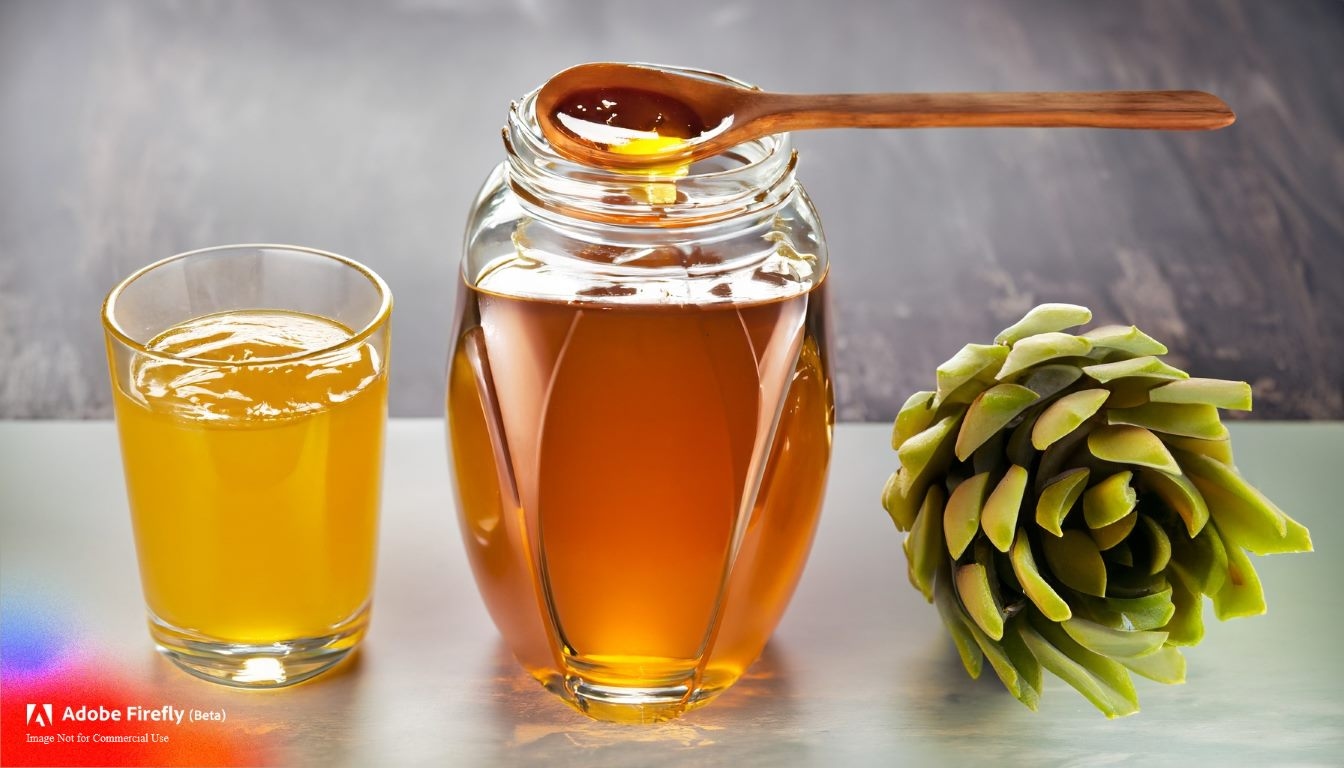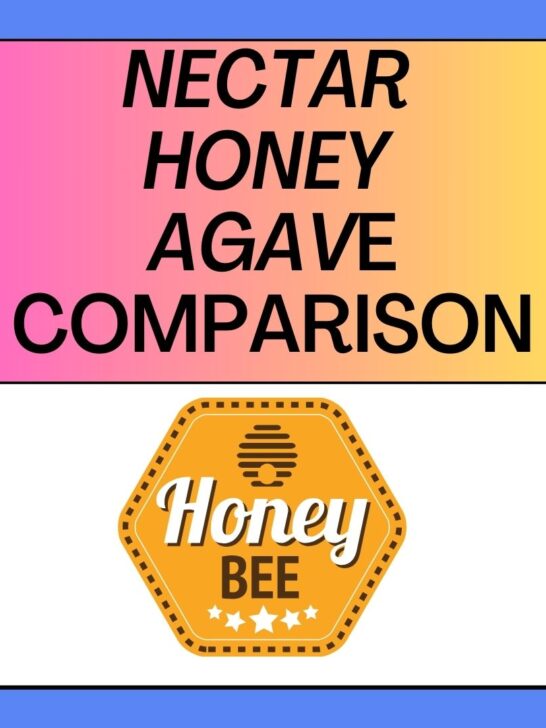When it comes to natural sweeteners, nectar, honey, and agave are among the top contenders. These sweet substances are derived from various sources and have unique flavors, textures, and culinary applications. In this comprehensive 2000-word article, we’ll delve into the differences between nectar, honey, and agave, covering their sources, production processes, nutritional profiles, health benefits, and culinary uses. By the end, you’ll have a thorough understanding of these natural sweeteners and how to incorporate them into your diet.
Post Contents
The Sweet World of Natural Sweeteners
As the quest for healthier and more natural sweetening options continues, nectar, honey, and agave have risen to the forefront of the culinary world. These natural sweeteners offer unique flavors and nutritional benefits, making them popular choices for a variety of dishes and beverages. Understanding the distinctions between these sweet substances is essential for both culinary enthusiasts and health-conscious individuals.
Purpose of the Comparison
The purpose of this comprehensive comparison is to provide you with a thorough understanding of nectar, honey, and agave. By exploring their sources, production processes, flavors, nutritional profiles, health benefits, and culinary uses, you’ll be better equipped to make informed choices about which sweetener to use in your cooking, baking, and everyday consumption.

Nectar: Nature’s Sweet Elixir
Source and Production
Nectar is a natural sweet substance produced by plants, primarily to attract pollinators like bees, butterflies, and hummingbirds. It is a thin, sugary liquid that is found within the blossoms of flowers. Nectar is collected by pollinators as they visit flowers, and it serves as their primary energy source.
Types of Nectar
Nectar can vary in flavor and sweetness depending on the plant species it comes from. Different flowers produce nectar with distinct profiles, resulting in a wide range of nectar flavors, from delicate and floral to robust and fruity.
Flavor and Aroma
Nectar’s flavor and aroma are intricately tied to the plant it originates from. For example, orange blossom nectar has a citrusy aroma, while lavender nectar imparts a floral and slightly herbal note. Overall, nectar tends to have a milder sweetness compared to honey or agave.
Nutritional Profile
Nectar is primarily composed of water and simple sugars, primarily glucose and fructose. It contains minimal vitamins, minerals, or other nutrients, making it a less nutrient-dense option compared to honey and agave.
Culinary Uses
While nectar is not commonly used as a standalone sweetener, it plays a vital role in pollination and the production of honey. It is also utilized in certain culinary applications, such as making nectar-based syrups for cocktails, desserts, or drizzling over pancakes and waffles.
Honey: Liquid Gold from Bees
Source and Production
Honey is a natural sweetener produced by honeybees from the nectar of flowers. Honeybees collect nectar using their long, tube-like tongues and store it in their hives. In the hive, bees regurgitate and evaporate the nectar until it transforms into honey.
Varieties of Honey
The flavor, aroma, and color of honey can vary significantly depending on the types of flowers the bees visit. This has led to a wide array of honey varieties, including clover honey, wildflower honey, lavender honey, and more. Each honey variety boasts its own unique characteristics.
Flavor and Aroma
Honey’s flavor and aroma are a testament to its floral origins. Different honey varieties can have subtle to pronounced flavor notes, ranging from fruity and floral to earthy and robust. For example, acacia honey is known for its mild, delicate flavor, while buckwheat honey has a bold, molasses-like taste.
Nutritional Profile
Honey is more than just a sweetener; it contains a range of nutrients, albeit in small quantities. It provides carbohydrates, primarily in the form of sugars like glucose and fructose. Honey also contains trace amounts of vitamins, minerals, and antioxidants.
Health Benefits
Honey is renowned for its potential health benefits. It has antibacterial properties, can soothe a sore throat, and may help with wound healing. However, it’s essential to use honey in moderation due to its high sugar content.
Culinary Uses
Honey is a versatile sweetener used in various culinary applications. It can be drizzled over yogurt, spread on toast, used as a glaze for meats, incorporated into salad dressings, or added to baked goods for moisture and sweetness.
Agave: The Plant-Based Sweetener
Source and Production
Agave syrup, often referred to as agave nectar, is derived from the sap of the agave plant, primarily the blue agave species. The process involves extracting the sap, heating it to break down the carbohydrates, and filtering it to create a syrup-like consistency.
Types of Agave Syrup
There are two primary types of agave syrup: light and dark. Light agave syrup undergoes minimal processing and retains a mild, neutral flavor. Dark agave syrup is heated for a more extended period, resulting in a richer, caramel-like flavor.
Flavor and Aroma
Agave syrup has a relatively mild and neutral flavor, with some varieties having subtle caramel notes. Its neutral taste makes it a popular choice for sweetening beverages and recipes without overpowering other flavors.
Nutritional Profile
Agave syrup is primarily composed of fructose, making it one of the sweetest natural sweeteners available. It is often promoted as a low-glycemic sweetener, as it has a slower impact on blood sugar compared to some other sweeteners.
Health Benefits
Agave syrup’s potential health benefits include its lower glycemic index and the fact that it is sweeter than sugar, allowing for the use of smaller quantities. However, it should still be consumed in moderation due to its high fructose content.
Culinary Uses
Agave syrup is a versatile sweetener used in a wide range of culinary applications. It is popular for sweetening beverages, such as tea and cocktails, and is also used in baking, salad dressings, and marinades.
Nectar vs. Honey vs. Agave: A Comparative Analysis
Flavor and Sweetness
When comparing flavor and sweetness, nectar tends to be the mildest in both aspects. It offers subtle floral notes and a mild sweetness. Honey, on the other hand, varies greatly in flavor and sweetness depending on the variety, ranging from delicate to robust. Agave syrup falls in between, with a neutral taste and moderate sweetness.
Nutritional Comparison
In terms of nutritional content, honey provides the most diverse range of nutrients, including trace vitamins, minerals, and antioxidants. Agave syrup, while lower in nutrients, is known for its low glycemic index. Nectar, in contrast, contains minimal nutrients and is primarily composed of simple sugars.
Glycemic Index and Blood Sugar Impact
Nectar and honey have moderate to high glycemic indices, meaning they can cause a rapid increase in blood sugar levels when consumed in large quantities. Agave syrup has a lower glycemic index due to its high fructose content, resulting in a slower impact on blood sugar.
Culinary Versatility
Each sweetener has its unique culinary applications. Nectar is less commonly used as a primary sweetener but can enhance the flavor of certain dishes and cocktails. Honey is incredibly versatile, suitable for both sweet and savory recipes. Agave syrup is favored for its neutral flavor and ability to dissolve quickly in cold beverages.
Choosing the Right Sweetener for Your Needs
The choice between nectar, honey, and agave ultimately depends on your culinary preferences and dietary considerations. Here are some factors to consider when selecting the right sweetener for your needs:
Culinary Applications: Consider the flavor and sweetness level required for your recipe. Honey’s diverse flavors can complement a wide range of dishes, while agave’s neutral taste may be preferable in some cases.
Dietary Considerations: If you’re concerned about blood sugar levels, agave syrup’s lower glycemic index may be appealing. However, be mindful of portion sizes with any sweetener.
Personal Preferences: Taste is subjective, so choose the sweetener that aligns with your palate and culinary goals.
Conclusion
Embracing Nature’s Sweet Bounty
In the world of natural sweeteners, nectar, honey, and agave each bring their unique characteristics to the table. Nectar offers subtle floral notes and a mild sweetness, while honey boasts a diverse range of flavors and potential health benefits. Agave syrup, with its neutral taste and low glycemic index, provides an alternative sweetening option.

94% of pet owners say their animal pal makes them smile more than once a day. In 2007, I realized that I was made for saving Animals. My father is a Vet, and I think every pet deserves one. I started this blog, “InPetCare”, in 2019 with my father to enlighten a wider audience.
